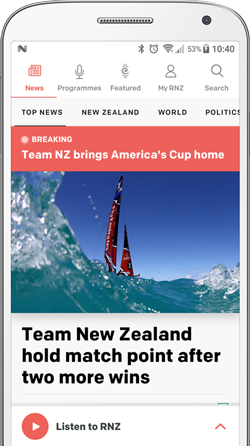
The old Wellington manual telephone exchange, photographed in 1894. Photo: Alexander Turnbull Library, Wellington, New Zealand
Chorus expects to close the national copper phone and broadband network by 2030. And it's hoping to pick up the pace.
Until 9 April, the Commerce Commission is calling for views on its recommendation to remove copper regulation from the network in areas outside the national fibre footprint.
What does this mean?
The regulation was put in place nearly 20 years ago, to ensure competitive access to the only network that could provide widespread voice and broadband services to New Zealanders.
Its removal would allow Chorus to start withdrawing services that are still used by consumers who haven't switched to alternatives. (The regulation has already been removed in urban areas where fibre and other, more modern options are available.)
Chorus has said the network, still used by more than 100,000 homes and businesses, is not sustainable and no longer meets New Zealanders' growing technology needs.
What's the latest?
In March, the Commission released a draft report recommending deregulation of copper services.
Telecommunications Commissioner Tristan Gilbertson in a statement said technological change had "eroded the natural monopoly concerns that led to copper being regulated 20 years ago when it was the only way to provide widespread phone and internet services".
Most rural consumers "can now access three alternative technologies that are often more reliable and affordable than copper".
A brief history of NZ's connectivity
Often called ADSL or VDSL, the copper wire network provides traditional landline and broadband internet services. But it's said to be aging technology prone to faults.
As mobiles have overtaken landlines and newer technologies such as fibre, wireless broadband, and satellite offer faster internet and more reliable service, the number of households and businesses using copper has dropped.
Anna Mitchell, in charge of Chorus' fibre network expansion and retirement of the copper network, told RNZ the country's first copper cables were laid more than 150 years ago.
"Copper was rolled out over decades and decades. It was still being rolled out in the 1970s and 1980s. The switch to fibre happened from the 1990s onwards."
From 2010, Chorus, the country's largest provider, along with other fibre companies, were steadily overbuilding the copper network.
One of the country's biggest infrastructure projects to date, the government-led Ultra-Fast Broadband Programme connected 87 percent of New Zealand to fibre by the end of 2022.
Even in rural areas not covered by the fibre network, "the majority of users aren't using copper anymore", Mitchell said. They're either using wireless broadband, which uses a cell phone network to provide internet access, or satellite services, such as Starlink.
Since 2021, Chorus has been withdrawing the copper network, with an estimated completion date of 2030.
Alternatives
"There's a misconception [copper] is more resilient than fibre," Mitchell told RNZ. But given it relies on electricity, "it degrades quickly in water".
When it breaks, "copper is more difficult to fix", she added.
"Fibre for contrast is just glass, so it sits in water really well. It doesn't require electricity running through it. It's more resilient for New Zealand, generally."
Currently, wireless is a good alternative for rural households, but its capacity is limited, and expansion relies on building more cell towers.
"With fibre, you build it once, you build it right, and you'll have it for 50 to 70 years in the ground, happy as Larry," she said. "It's future-proof and it's reliable."
The Commission's report found nearly 97 percent of premises in rural copper areas are in coverage of three alternative broadband technologies, while nearly 60 percent are in coverage of four. (Mobile data wasn't considered a substitute.)
Is this the end of landlines?
According to Mitchell, a common misconception about the retirement of the copper network is that it spells the end of landlines. This isn't the case. Landline phone services can run over an internet connection.
"You can get a landline anywhere in New Zealand where you can see the sky," Mitchell said.
International comparisons
Europe is also working towards switching off its copper network by 2030, according to the Body of European Regulators for Electronic Communications.
The United States and Australia are also transitioning from a legacy copper network to fiber and wireless.
What does this mean for the physical infrastructure?
In the United Kingdom, telecommunications company BT has scrapped a plan to turn copper network cabinets, used for cable distribution, into electric car chargers.
In New Zealand, some cabinets will be repurposed as part of the fibre network, Mitchell said.
But will the copper cables be dug out of the ground? "No."
What's next?
The Commission is seeking views on its draft recommendation by 9 April, and will invite cross-submissions by 5 May.
The recommendation must be finalised for Media and Communications Minister Paul Goldsmith by the end of the year.
Goldsmith will then decide whether to proceed with it.



